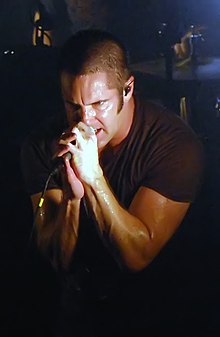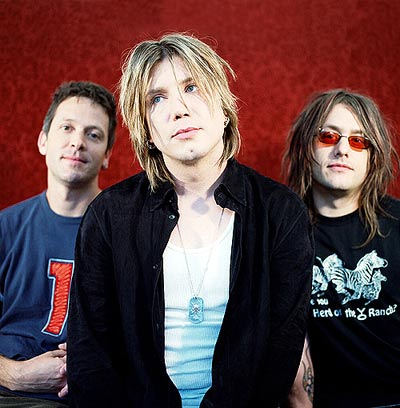Sound Familiar?
“Come Out and Play,” “Self Esteem,” “Pretty Fly (For a White
Guy)”
Who Are They?
One of the bands responsible for reviving mainstream
interest in punk in the ‘90s.
Way back in 1983, Bryan “Dexter” Holland and Greg Kriesel
decided to form a band after being refused entry to a Social Distortion show.
They called themselves Manic Subsidal and eventually picked up Doug Thompson,
James Lilja and Kevin “Noodles” Wasserman. (Fun fact: Noodles was a school
janitor and quite a bit older than the other guys. Dexter and Greg allegedly
let him join the band because he was old enough to buy them alcohol.)
After a small lineup change, the band changed its name to
The Offspring in 1986. The boys recorded a few demos, lost a drummer (who went
on to pursue a career in gynecology) and signed to Nemesis Records in 1988. The
Offspring’s self-titled debut was released in limited numbers in 1989 and a
proper CD release didn’t surface until 1995. After a six-week national tour,
the band ditched Nemesis Records for Epitaph and released Ignition in 1992.
Ignition exceeded
everyone’s expectations and led The Offspring to tour with the likes of
Pennywise, No Doubt and Voodoo Glow Skulls.
But these California punk rockers didn’t achieve mainstream
success until the release of the aptly-titled Smash in 1994. Thanks to huge singles like “Self Esteem” and “Come
Out and Play,” Smash went on 16
million copies, a record for an independent label band.
Since they had a ton of cash to blow at this point, Dexter
and Greg created their own label called Nitro Records. The label signed quite a
few punk bands, including The Vandals and Guttermouth.
Smash’s follow-up,
1996’s Ixnay on the Hombre, didn’t do
as well. The album marked a departure from the band’s signature punk sound with
more mainstream rock songs like “All I Want” and “Gone Away.”
The Offspring’s ascension to mainstream status reached
critical mass with 1998’s Americana. The
album spawned three of the band’s biggest hits to date: “Pretty Fly (For a
White Guy),” “Why Don’t You Get a Job?” and “The Kids Aren’t Alright.”
The boys rounded out the decade by appearing at Woodstock '99.
(As always, I have included the entire set for your viewing pleasure.)
Where Are They Now?
Riding the success of a brand new album and tour.
The Offspring greeted the new millennium with just a hint of
controversy. Conspiracy of One, the
band’s sixth studio album, was originally supposed to be online through the
official website, but the bigwigs at Sony put a stop to that. The Offspring
just wanted to show its support for downloading music on the Internet. What’s
so bad about that? (Fun fact: The band sold T-shirts with the Napster logo on
them and donated the money to Napster founder Shawn Fanning.)
Drummer Ron Weity split in 2003 and replaced by Josh Freese
during the recording of Splinter,
then by Adam “Atom” Willard after the album’s release. Splinter’s original title was supposed to be Chinese Democrazy (You Snooze, You Lose), named after the
long-delayed Guns N’ Roses album. Axl Rose got wind of this and did what he
does best: pitch a bitch fit. He filed a cease and desist order against The
Offspring, but took it back once he realized the album’s title was announced on
April 1.
After a greatest hits album and an appearance at Warped
Tour, The Offspring went on a short hiatus. During this time, Atom left the
band to join Tom DeLonge’s pet project Angels & Airwaves.
The band’s eighth studio album, Rise and Fall, Rage and Grace, was released in 2008 to mixed reviews.
The second single, “You’re Gonna Go Far, Kid,” landed at number one on the Hot
Modern Rock Tracks chart and stayed there for 11 weeks.
The Offspring’s most recent album, 2012’s Days Go By, has also received mixed
reviews, with particularly negative ones from Spin and Rolling Stone.
But Why The
Offspring?
Along with having a brand new album to tour behind, the band
will co-headline the 2013 Soundwave Festival in Australia with Metallica and
Linkin Park.
What Does Sam Think?
I love ‘90s pop punk bands and you should, too. They helped
bring punk to the mainstream, and no, I don’t consider that a bad thing. It’s
accessible music that’s a little jagged around the edges. It doesn’t try to be
hardcore or no wave or anarcho-punk. Pop punk is fun, but not “bubblegum pop”
fun. Of course, I’m talking early pop punk, not the lame bands you see today
(ahem, All Time Low). Green Day, Rancid, Operation Ivy, Social Distortion, The
Offspring. These are names you should know.
Now let’s look at The Offspring. This band, along with Green
Day, rode the mainstream wave longer than the rest of the scene and doesn’t
show signs of stopping. Granted, The Offspring continues to dive into modern rock
territory (see the decidedly mediocre Days
Go By), but the pop punk roots are still there.
Smash is the
band’s best album. Period. It’s a prime example of where punk was going in the
‘90s (see also: Green Day’s Dookie
and Rancid’s …And Out Come the Wolves).
It’s fast, but not too fast. You can hear the influence from The Ramones, but
the songs have a bit more substance. “Self Esteem” remains one of the best
Offspring tunes because it’s just so punk
rock, man. No, but seriously, that riff is so heavy, sometimes I wonder how
it reached all those teenyboppers.
This band is just coasting along now. These guys will always
have a loyal fan base, but they really haven’t put out a solid album in a
while. Yeah, they’ve passed the point of having to prove themselves to an
audience, but come on. The Offspring
is capable of so much more than Days Go
By.
My advice to this band is to go back underground, experiment
a little and come back with a fresh outlook on music. (Same goes for you, Green
Day.)
-- Sam Boyer,
reporting from the ‘90s.

















